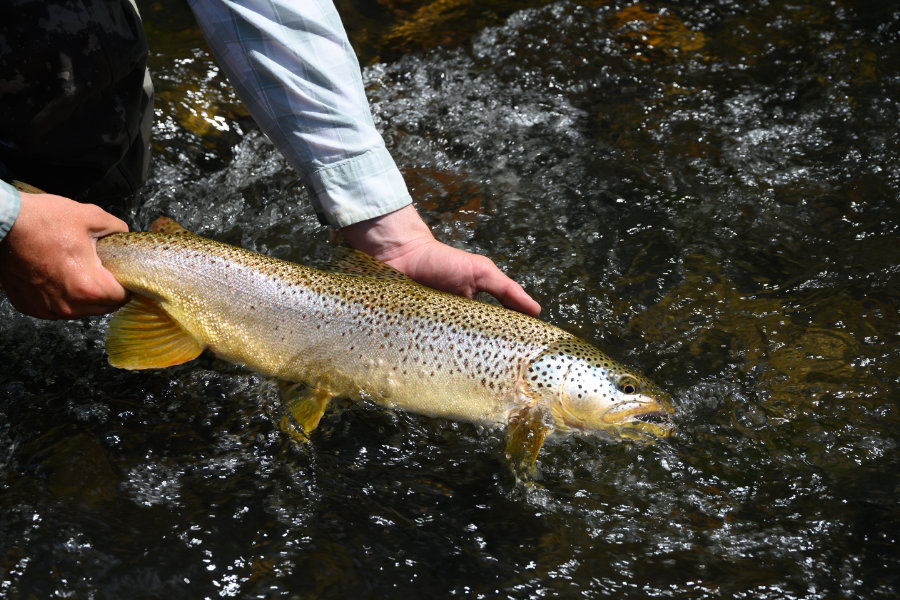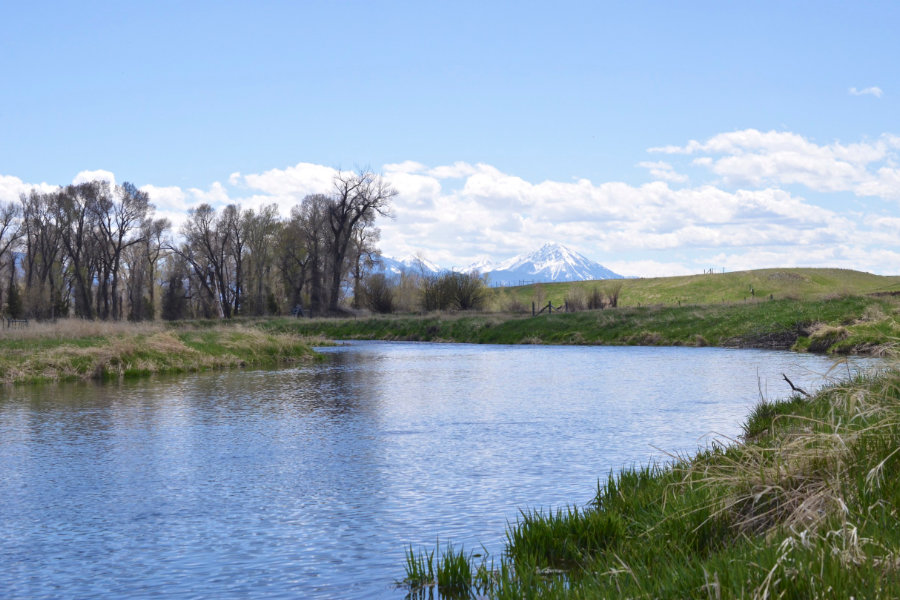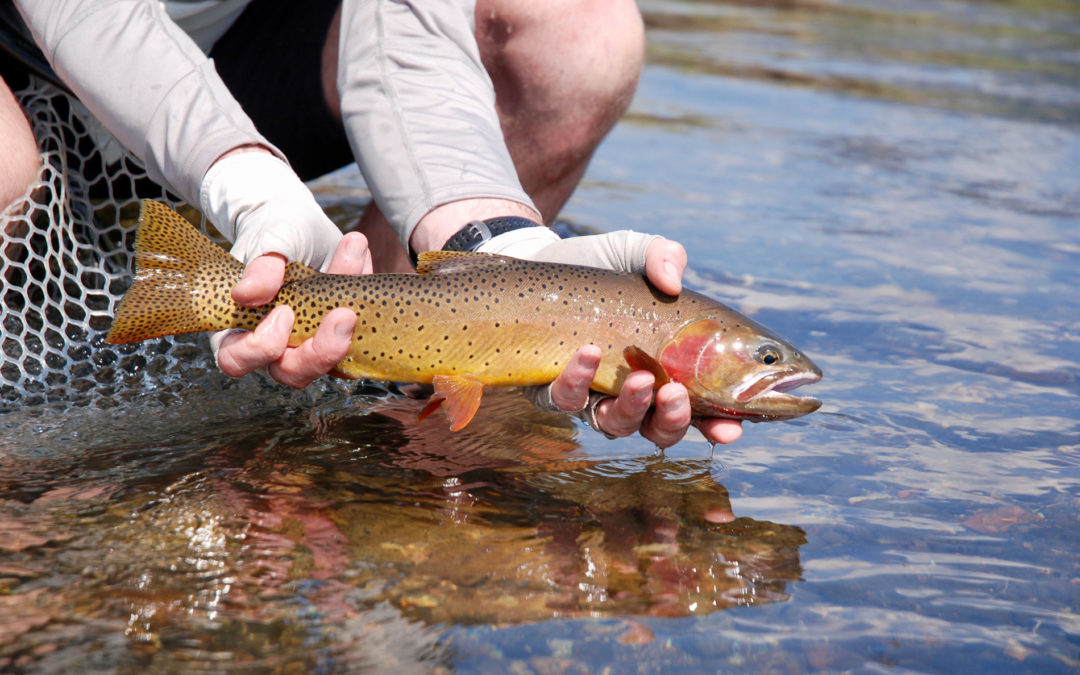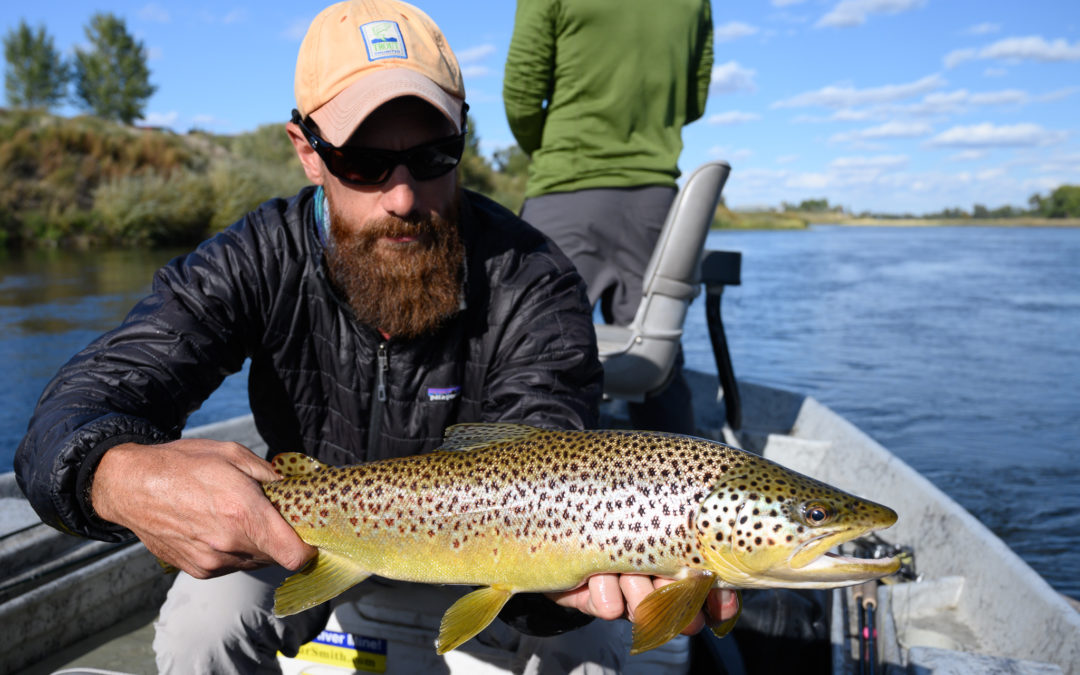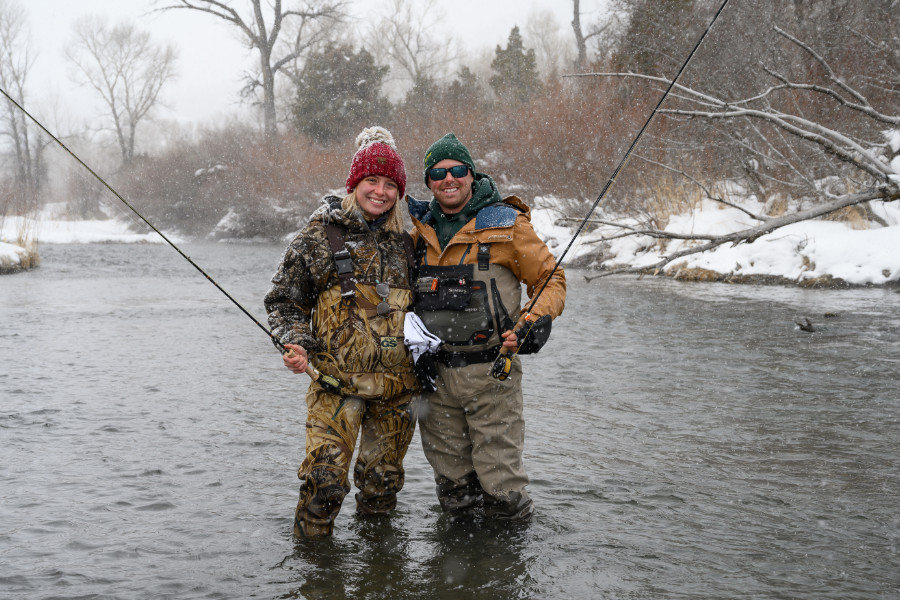Benefits of Fishing with Barbless Hooks
To pinch the barb or not to pinch the barb? This is a question every fly fishing angler faces each and every time they go fishing. Most hooks on commercially available flies come with barb in tact. Some newer flies, inspired by euro-style nymphs, are available on high quality barbless hooks. Many of the fly tyers among us pinch the barb as soon as the hook goes into the vice. But for most of us, hooks come with a barb and whether or not we choose to fish with a barbless hook is a streamside decision. For us and our Bozeman, Montana fly fishing guides there is only one answer: just pinch it. And here’s our reasons why.
1. It Makes the ‘Release’ Part of ‘Catch and Release’ Easy
Most fly fishing anglers practice catch and release most of the time. We practice catch and release on all of our Montana guided fly fishing trips. We have gotten very good at the catching part and having barbless hooks makes the releasing part dead easy. Simply put if you are going to put the fish back after you catch them, it only makes sense to make it as easy as possible on you and the fish. Sure you might have a ‘long distance release’ every now and again, but we have found from years of outfitting and guiding anglers in Montana that maybe only 1 out of 25 properly fought fish will be lost due to a hook being barbless. And if you are going to be letting it go anyways, who really cares? Pinch that barb and spend more time catching than releasing.
2. Better for the Fish
95% of the fish we catch are wild trout. Their mouths are fairly fragile and skin tears easily. They are sensitive to high water temps and don’t fare well out of water. Catching them with barbed hooks means ripped mandibles, torn flesh, and more time spent in the upper part of the water column where surface temps can be high and, inevitably more time out of water during the release. The mortality rate for fish caught with barbed flies is roughly double that for fish caught with barbless flies. Don’t believe us? Check out: http://www.akleg.gov/basis/get_documents.asp?session=28&docid=1945 for more scoop. Pinch your barb and save trout lives.
3. Better for the Anglers
Over the course of our time as Montana fly fishing guides and outfitters we have had to remove lots of hooks out of people. Sometimes from our anglers, but most of the time from ourselves. When multiple hooks are going multiple directions, many times a day, at some point the odds will catch up to you and hooks will end up where there not supposed to be. And when they do, you will sure be glad you are fishing with barbless hooks or be wishing you had been if you aren’t. No tricks, mono-loops, or pliers needed for removing barbless hooks. They come right out. Every time. And as someone who has hooked themselves with barbed hooks and had to remove them, many times, we can tell you one thing for sure: it hurts. Save yourself the trouble and just pinch your barbs.
4. Better for Wildlife
We do not believe that fly fishing and flies are a serious threat to riparian wildlife. That being said we have seen a few, rare instances of animals wrapped up in lures that inevitably led to their demise. In each case these were large crank-bait style lures with long pieces of mono-attached. And each time the hooks were fully barbed. If the hooks had been barbless, they would have likely not stayed in place. With the rise of larger, articulated-style streamers, one could easily believe that a goose, merganser, or a muskrat could end up with a sex-dungeon streamer tied up between its legs. Our goal as sportsmen and anglers is to leave as small of a footprint behind as possible. Pinching your barbs is part of that.
5. Fly Fishing is Supposed to Be Fun
We believe all anglers, at their core, go fishing to have fun. While this might mean different things for all of us, we think we can all agree that barbed hooks are just not fun. Ripping a barbed hook out of a deeply hooked fish of the Yellowstone River is not fun. Ripping a barbed hook out of your buddy’s arm on the Missouri River is not fun. Watching a fish bleed out after release on the Madison River is not fun. We opt for having fun while fishing. We pinch our barbs. We encourage you to do the same.
Pinching your barbs is easy. Any old pair of pliers, hemostats, or clamps will do the trick. Keep your lines tight and the fish will come in all the same.
